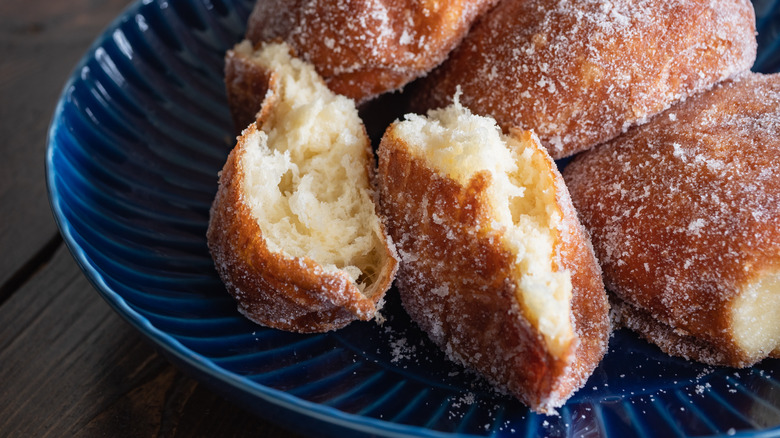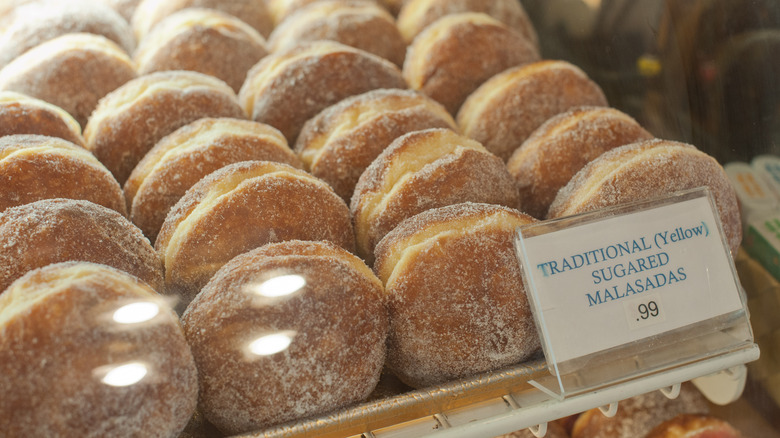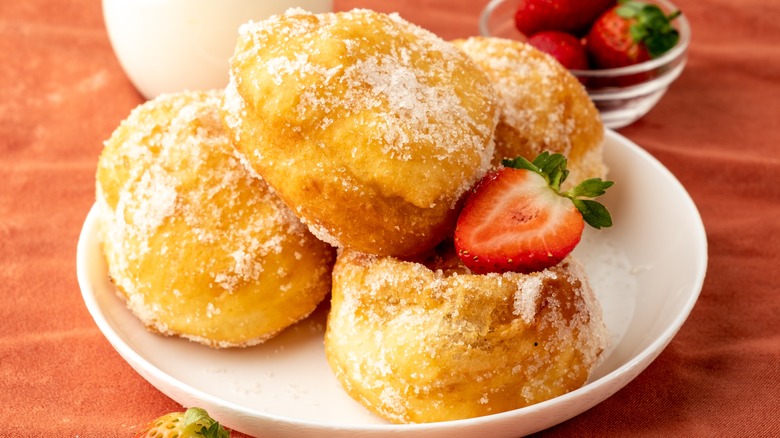What Are Malasada Donuts And How Did They Get So Popular In Hawaii?
It's an understatement to call malasadas part of Hawaii's culinary gifts. Ever since an influx of Portuguese farmers brought the recipe to the region at the end of the 19th century, these fried donuts have become a staple of Hawaiian pastry shops. Their popularity as a treat before Lent in particular made locals rename Shrove Tuesday as Malasada Day, and the fictional Hawaii-inspired Pokémon Sun and Moon even sells these treats as a purchasable item.
The secret that sets malasadas apart from other doughnuts around the world are eggs — and a lot of them. Typically, these fried donuts are made from a rich, sweet yeast dough that incorporates a large batch of eggs into the mix. The high fat and protein content of eggs helps bind dough and retain both air and moisture in the cooking process, which results in a lighter, fluffier texture. Malasadas are deep-fried until golden brown, coated with sugar, and often served warm.
The recipe has origins with Portuguese Catholic traditions
Christianity makes up the largest religious denomination in Hawaii, with the Pew Research Center reporting that 63% of Hawaiian adults identify as Christians, and Catholics making up one-third of that group. During the days leading up to Lent, malasadas become the go-to sugary treat to indulge in before the fasting season. None of the ingredients in these fried donuts are strictly forbidden during fasting, but many Catholics typically abstain from desserts in general during this religious period.
In fact, the origin of malasadas can be traced back to Catholic celebrations of Shrove Tuesday, also referred to as Carnival or Mardi Gras, in the Portuguese islands of the Azores. On that day, Catholics usually try to finish up and indulge in all the remaining sweets and meats available before Ash Wednesday. While European missionaries introduced Christianity decades prior to the American colonization of the island, Portuguese settler workers introduced the custom of eating malasadas prior to Lent.
Malasada donuts come in an assortment of flavors
Locals and tourists interested in eating incredibly well in Oahu, Hawaii's most populated island, should know that some of the oldest malasada pastry shops are found there. While traditional malasadas are typically only coated with sugar, most bakeries put their own twist onto these fried donuts by adding ingredients like cinnamon to the coating mix. However, the real way malasada shops stand out from one another comes down to the wide assortment of fillings sold at specific locations.
Some of Hawaii's most popular malasada fillings include passionfruit, custard, and chocolate, but unorthodox fillings like pumpkin are not unheard of, especially at seasonal times of year. The most famous malasada pastry shop in Honolulu, Leonard's Bakery, sells malasadas filled with coconut, macadamia nut, and guava, for example. Suffice to say, malasada shops tend to get creative, as there is no one definitive filling for them.



